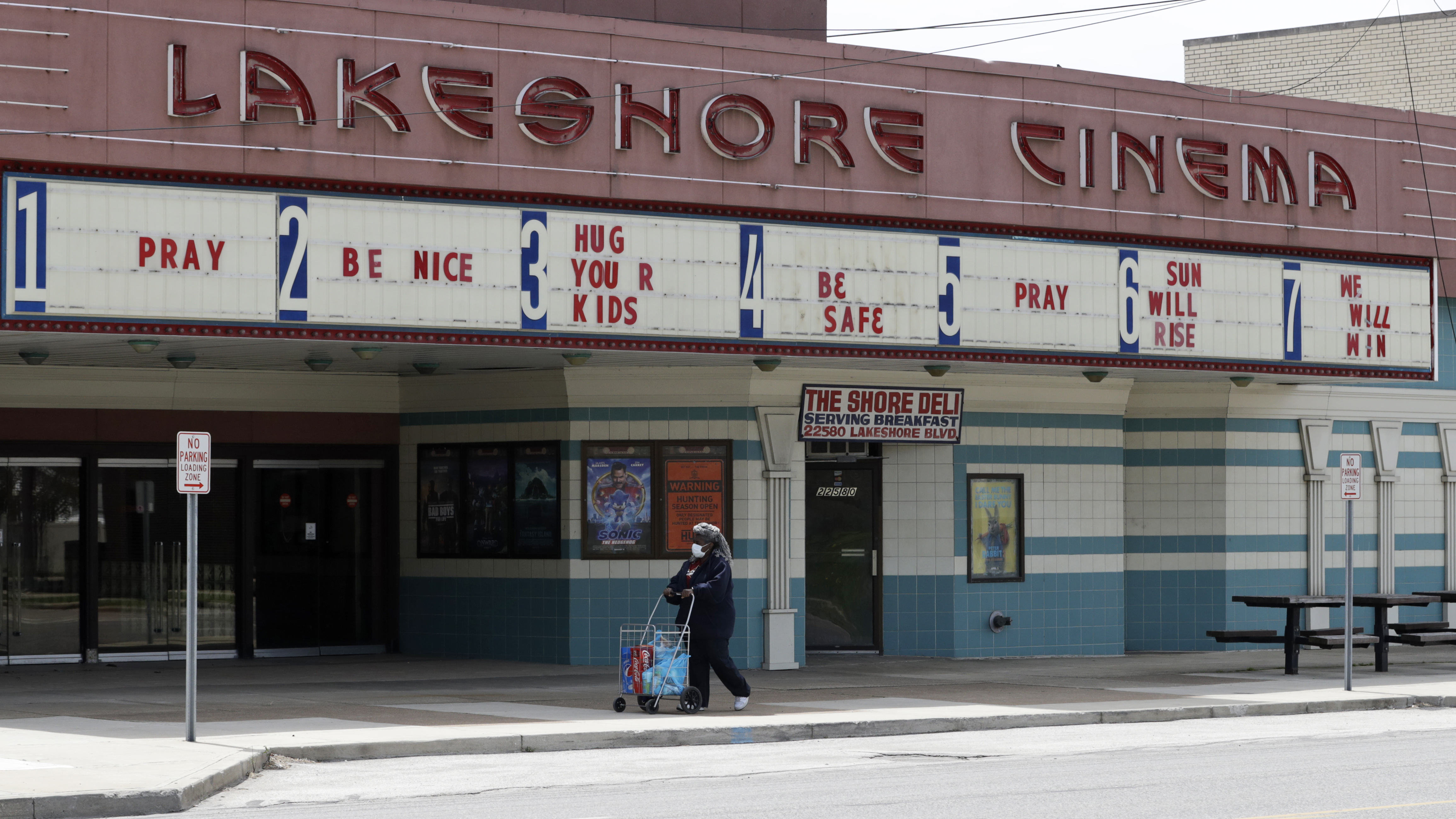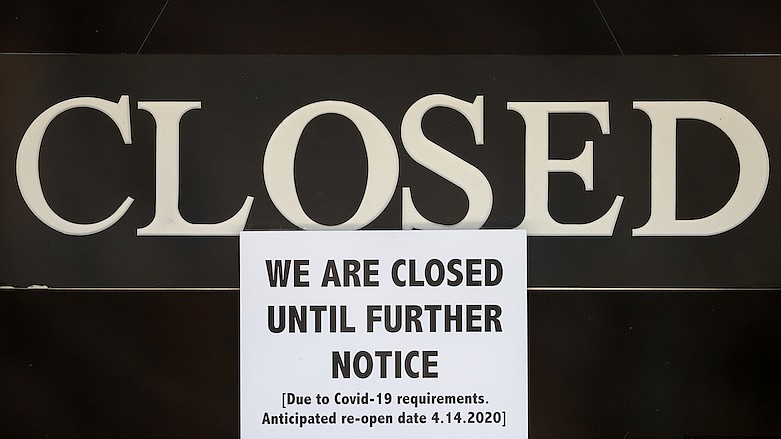Nearly 3.2 million laid-off workers applied for unemployment benefits last week as the business shutdowns caused by the viral outbreak deepened the worst U.S. economic catastrophe in decades.
Roughly 33.5 million people have now filed for jobless aid in the seven weeks since the coronavirus began forcing millions of companies to close their doors and slash their workforces. That is the equivalent of one in five Americans who had been employed back in February, when the unemployment rate had reached a 50-year low of just 3.5%.
A study by WalletHub found that Georgia has been the hardest hit state in the country by the jump in unemployment since the start of the coronavirus pandemic.
The Georgia Department of Labor said Thursday it has issued over $1.7 billion in combined state and federal unemployment benefits in the past seven weeks after processing nearly 1.6 million initial unemployment claims. Of these claims, 778,330 were valid with enough earned wages to receive benefits.
Unemployed people in Tennessee received more than $852 million in benefits in April, state officials said, as the number of jobless surged with employers letting go hundreds of thousands of workers during the new coronavirus outbreak response.
In the past eight weeks, 477,282 have filed for initial jobless claims in Tennessee, including 52,322 workers in the 10-county Southeast Tennessee district that includes Chattanooga.
Tennessee jobless claims
› Week ended March 28 94,492› Week ended April 4 116,141› Week ended April 11 74,772› Week ended April 18 68,968› Week ended April 25 43,792› Week ended May 2 37,319Southeast Tennesseejobless claimsIncludes Hamilton, Marion, Sequatchie, Bradley, Polk, Meigs, Rhea, Bledsoe, McMinn and Grundy counties.› Week ended March 28 9,309› Week ended April 4 13,578› Week ended April 11 10,442› Week ended April 18 10,188› Week ended April 25 5,018› Week ended May 2 3,787Source: Tennessee Department of Labor and Workforce Development
The Labor Department's report Thursday suggests that layoffs, while still breathtakingly high, are steadily declining after sharp spikes in late March and early April. Initial claims for unemployment aid have now fallen for five straight weeks, from a peak of nearly 6.9 million during the week that ended March 28.
Applications for jobless aid rose in just six states last week, including Maine, New Jersey, and Oklahoma, and declined in the 44 others.
The report showed that 22.7 million people are now receiving unemployment aid - a rough measure of job losses since the shutdowns began. That figure lags a week behind the figures for first-time unemployment applications. And not everyone who applies for jobless aid is approved. The number of laid-off workers receiving aid is now equal to 15.5% of the workforce that's eligible for unemployment benefits.
Those figures are a rough proxy for the job losses and for the unemployment rate that will be released Friday, which will likely to be the worst since modern record-keeping began after World War II. The unemployment rate is forecast to reach 16%, the highest rate since the Great Depression, and economists estimate that 21 million jobs were lost last month. If so, it would mean that nearly all the job growth in the 11 years since the Great Recession ended has vanished in a single month.
Even those stunning figures won't fully capture the magnitude of the damage the coronavirus has inflicted on the job market. Many people who are still employed have had their hours reduced. Others have suffered pay cuts. Some who lost jobs in April and didn't look for a new one in light of their bleak prospects won't even be counted as unemployed. A broader measure - the proportion of adults with jobs - could hit a record low.
The impact has fallen unevenly on the U.S. population, with Hispanics much more likely to suffer an economic hit. According to a survey in mid-April by The Associated Press-NORC Center for Public Affairs Research, 61% of Hispanics said their household has lost income because of the coronavirus, whether through a layoff, reduced hours or pay cuts. That compares with 46% of blacks and 43% of whites who said so.
Layoffs have also been more concentrated among the less-educated. Twenty-eight percent of Americans without college degrees say they've endured a layoff in their household, compared with 19% of people with college degrees.
The official figures for jobless claims may also be under-counting layoffs. Surveys by academic economists and think tanks suggest that as many as 12 million workers who were laid off by mid-April did not file for unemployment benefits by then, either because they couldn't navigate their state's overwhelmed systems or they felt too discouraged to try.
On Thursday, the government also reported how many self-employed, contractors and gig workers, who are newly eligible for jobless benefits, applied for them last week. Nearly 584,000 people did so. The government reported that figure separately because it isn't adjusted for seasonal patterns, as the 3.2 million figure is.
The job cuts have hammered workers at restaurants, hotels and retail firms particularly hard. According to the payroll processor ADP, about half the total jobs in the hotel and restaurant industry - 8.6 million - disappeared in April, based on data from its corporate clients. A category that includes retail and shipping shed 3.4 million workers.
After problems with state computer systems had slowed the distribution of federal benefits for many laid-off workers, all 50 states are now paying the $600 extra weekly benefit that the federal government included in a relief package enacted in late March. That represents a significant help to millions of laid-off workers, many of whom still remain anxious and uncertain.
 A woman wearing a mask walks with her groceries past a closed Lakeshore Cinema theatre, Wednesday, May 6, 2020, in Euclid, Ohio. With the economy paralyzed by business closures, the unemployment rate likely jumped to at least 16% — from just 4.4% in March — and employers cut a stunning 21 million or more jobs just in April, economists have forecast. (AP Photo/Tony Dejak)
A woman wearing a mask walks with her groceries past a closed Lakeshore Cinema theatre, Wednesday, May 6, 2020, in Euclid, Ohio. With the economy paralyzed by business closures, the unemployment rate likely jumped to at least 16% — from just 4.4% in March — and employers cut a stunning 21 million or more jobs just in April, economists have forecast. (AP Photo/Tony Dejak)